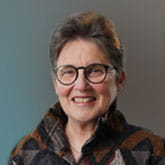Doctor’s office waiting rooms are busy places. It is estimated that there are 883.7 million ambulatory care visits a year in the U.S. 54.5% of these visits are to primary care physicians1. With an average wait time of 18 minutes and 13 seconds2 from arrival until a patient is seen by the provider, there is ample time for the mingling of patients who have an acute infectious disease and those who do not.
Studies have shown that indeed airborne infections pose a particular threat to susceptible individuals whenever they are placed together with an infected individual in confined spaces like a healthcare facility waiting area3. In pediatric offices, it has been found that there is a spike in influenza-like respiratory illnesses two weeks after a visit for a well child visit4. Additionally, it has been found that surfaces in doctors’ offices are highly contaminated, with bacterial counts that frequently exceed counts observed on surfaces in the in-patient settings. Furniture, magazines and toys in doctors’ offices have been found to carry the highest bacterial burden5.
According to the CDC, the Coronavirus responsible for the COVID-19 pandemic sweeping across the world is an RNA virus thought to spread mainly between people who are in close contact with one another (within about six feet) through respiratory droplets produced when an infected person coughs or sneezes. It may be possible that a person can contract COVID-19 by touching a surface or object that has the virus on it and then touching their own mouth, nose, or possibly their eyes, but this is not thought to be the main way the virus spreads6. These patterns of transmission raise the concern that health care facility waiting areas are environments in which there is risk of transmission of COVID-19 to high risk uninfected patients.
There are many steps that a practice can take to mitigate this risk. In broad terms, these measures fall into three categories: Changes to the waiting room physical space, changes to patient flow and changes to care utilization patterns.
Deep Cleaning and Seating Arrangement
During the COVID-19 pandemic, emphasis needs to be placed on deep cleaning of the physician office waiting rooms including all frequently touched surfaces such as the reception counters, check in kiosks and iPad screens, waiting area chairs, elevator buttons, door handles and railings. It might be necessary to remove toys and magazines from the waiting room until the pandemic is over. It is recommended that, where possible, the waiting room chairs are arranged in a manner that is conducive to patients maintaining at least 6 feet of distance from other patients. There have been some recommendations regarding the use of HEPA filters. Unfortunately, since the Coronavirus is very small (0.1 of a micron), it is likely not filtered by usual commercially available HEPA filters which are only able to filter particles as small as 0.3 microns7.
Patient Flow Pattern
Patient flow is an area where much can be done to mitigate the risk for spread of COVID-19 in the waiting room. Health care organizations with multiple locations have chosen to designate certain offices to solely seeing patients with suspected COVID-19, designating other offices to see patients for ongoing chronic and acute non COVID-19 issues. This separation reduces the likelihood of patients with respiratory infectious symptoms sharing the waiting room with others. If multiple locations are not available, this separation can be done with designating certain times of day on certain days for older at-risk noninfectious patient appointments. Some practices have completely closed their waiting rooms, inviting patients to wait in their cars in the parking lot until they receive a text when the exam room is available for them, obviating the need for any joint time in the waiting room.
Implement Telehealth Visits
Lastly, care utilization patterns can be changed by implementing telehealth visits. Patients with COVID-19 could be evaluated remotely, avoiding the risk of contagion for the office staff and providers. Those deemed seriously ill could be referred to the emergency department with prior notification of their arrival. Patients deemed stable with milder presentations of COVID-19 could be followed and monitored at home with serial telehealth visits. Patients with ongoing chronic conditions who are at high risk for complications from COVID-19 infection could be provided with needed care via telehealth from the safety of their homes.
The NextGen® Advisors team would like to hear how your practice has mitigated the risk of spread of COVID-19 in your practice and/or in your waiting area. Please tell us about the steps you have taken at advisors@nextgen.com . We will be sure to share your best practices with our readership.
1https://www.cdc.gov/nchs/fastats/physician-visits.htm
2https://medcitynews.com/?sponsored_content=how-patient-wait-times-affect-customer-satisfaction
3https://www.ncbi.nlm.nih.gov/pmc/articles/PMC2939637/
4https://www.ncbi.nlm.nih.gov/pmc/articles/PMC4380138/
5https://www.wsaz.com/home/headlines/Study-Waiting-Rooms-Could-Spread-Illness-293922291.html
6https://www.cdc.gov/coronavirus/2019-ncov/prevent-getting-sick/how-covid-spreads.html
Meet NextGen Ambient Assist, your new AI ally that generates a structured SOAP note in seconds from listening to the natural patient/provider conversation.
Read NowCategories
- Analytics and Reporting
- Regulatory Updates
- Artificial Intelligence (AI)
- Community Health
- COVID-19
- Dental
- Documentation
- Electronic Health Records
- Financial Management
- Health IT 101
- Industry news
- Integrated Care
- Interoperability
- Mobile EHR
- NextGen Advisors
- Patient Experience
- Practice Management
- Provider Experience
- Patient Engagement
- Population Health
- Revenue Cycle Management
- Small Practice
- Telehealth
- Value-based Care
